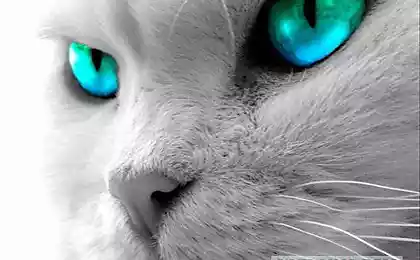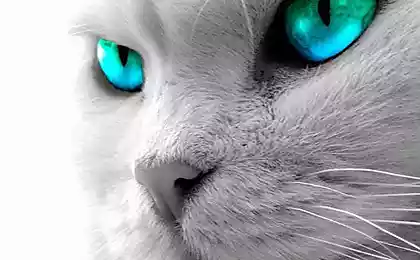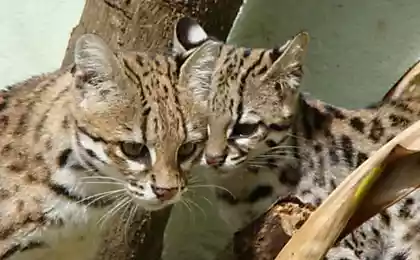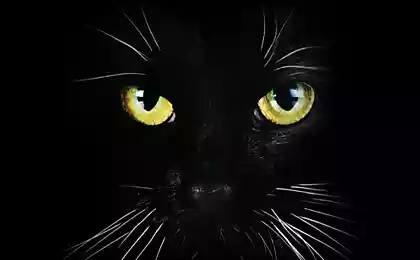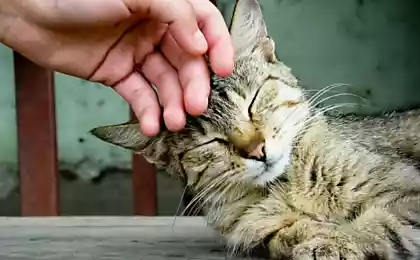1028
Bushy cat
Serval, shrub or cat - a slender, long-legged representative of a medium-sized cat. It has the highest and largest feet ears relative to body size of all known species of cats.
The body length is serval 90-135 cm, height at the shoulders - up to 40-65 cm; weight - 8-18 kg. The head of a miniature; a relatively short tail - 30-45 cm. For a number of morphological features is a close relative of serval and caracal lynx, although painting it is more reminiscent of a cheetah.
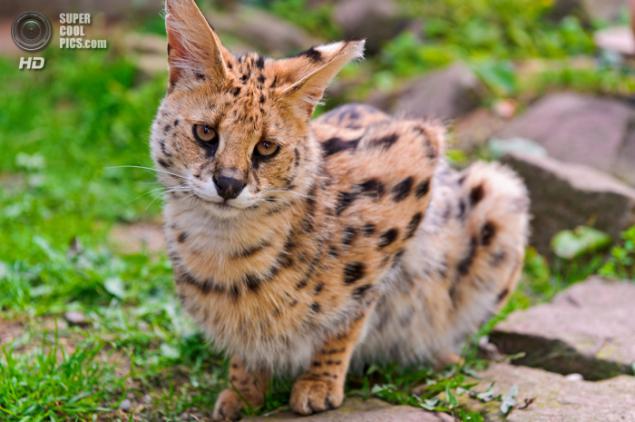
There are differences in the color of the different geographical races serval. Serval living in the steppe and forest cover areas characterized by large spots on a light background. Forest serval - a dark, squat and stains they are smaller; before they were isolated in a separate kind of "servalovidnyh cats" or servalin. The transition between these two types of smooth, in particular where their areas adjacent to each other. For example, in Uganda and Angola came across individuals with large spots on a dark background, as in Guinea and Togo - with small spots on a light yellow background. In the mountainous areas of Kenya there are black servals (melanistic); Here they constitute up to half of the population. White servals with silver-gray spots known only in captivity.
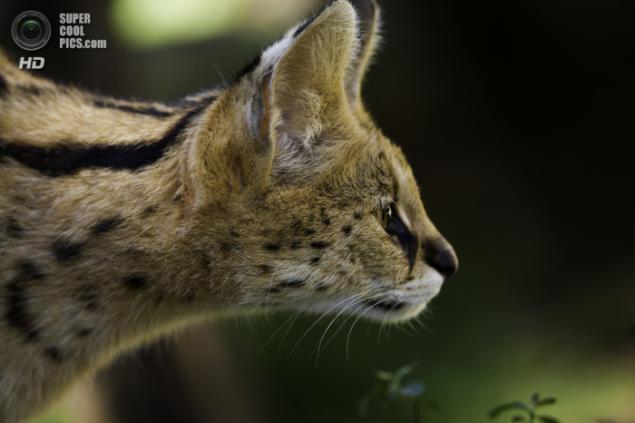
Serval inhabit open areas with shrubs and grassy thickets, selyas, usually near water. They avoid the deserts and dry plains and tropical rainforests. This crepuscular animals; the peak of their hunting activity accounts for 4-5 am and 10-11 pm. Their main prey are rodents, hares, hyraxes and small antelope, as well as flamingos, guinea fowl and other birds. Large ears and well-developed ears help them to hunt down rodents and lizards, and long limbs facilitate progress in the tall grass savannah and help watch over it. Each photoreceptor perceives both color, shape and movement.

Despite the long strong legs, long serval can not chase prey. Its method of hunting is similar to hunting tactics of another cat - caracal. Hunts prowl in tall grass; if necessary, it makes a great vertical jump up to three meters in height, knocking the flying birds. Rodents often digs, tearing a hole, and for wood hyraxes climb trees. He knows how to swim. Serval - very efficient hunters; on average, 59% of the attacks end in the capture of prey.

Serval lead solitary lives. Clashes between them are rare. In case of danger, they prefer to hide or flee, making unexpected leaps or drastically changing the direction of running, rarely climb trees.
Reproduction from Serval not confined to a particular time of year. However, in the southern regions of the range cubs appear mainly in February and April. During estrus female and male a few days rest and hunt together. The gestation period is 65-75 days. Cubs are born in the old burrows of aardvarks or in nests in the grass; the average litter - kitten 2-3. At one year old they leave the mother and find their own territory. Young females live with their mothers longer than young males. Maturity at Serval comes at the age of 18-24 months.
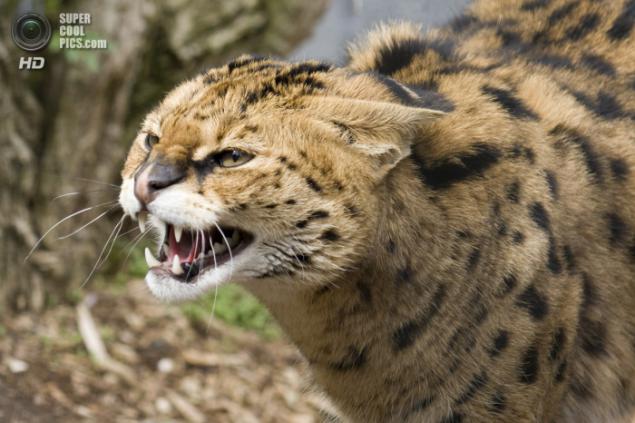
Serval is a target species, as it goes to the skin fur; it is also appreciated in certain areas of Africa due to their meat. Destroy it and because of the attacks on poultry. As a result, in densely populated areas, the number of African Serval has fallen markedly. North serval subspecies listed in the Red Book of the IUCN status "species, endangered».
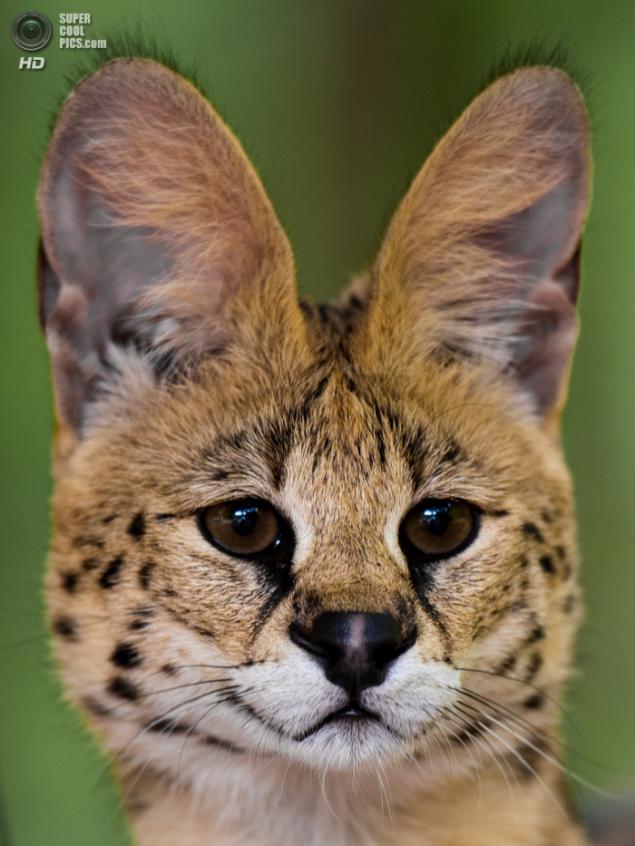
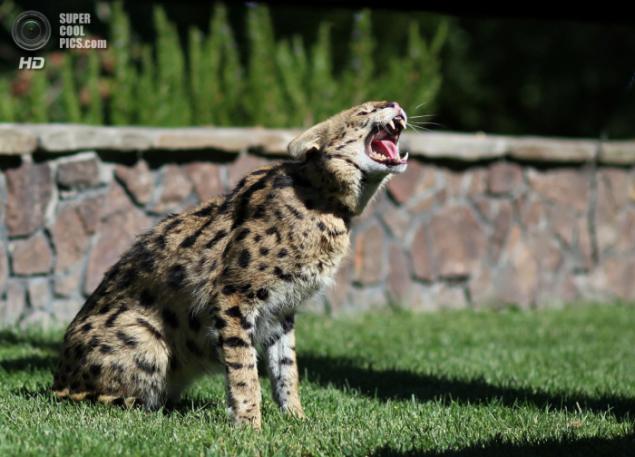
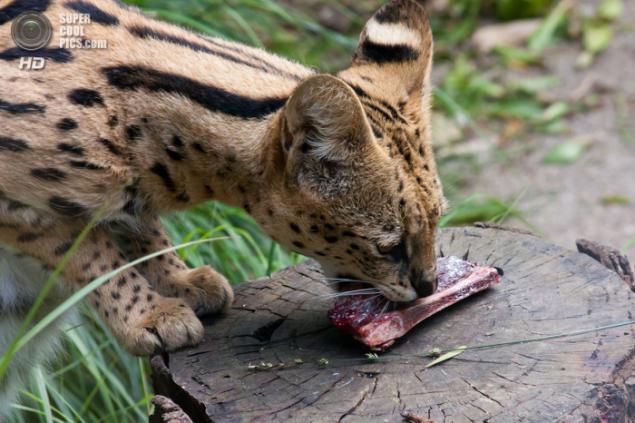


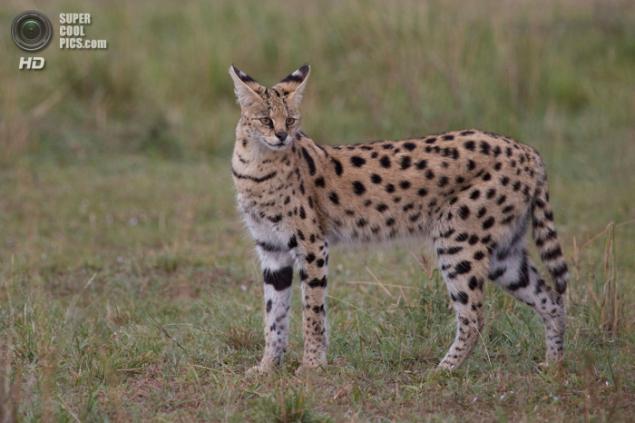
©
The body length is serval 90-135 cm, height at the shoulders - up to 40-65 cm; weight - 8-18 kg. The head of a miniature; a relatively short tail - 30-45 cm. For a number of morphological features is a close relative of serval and caracal lynx, although painting it is more reminiscent of a cheetah.

There are differences in the color of the different geographical races serval. Serval living in the steppe and forest cover areas characterized by large spots on a light background. Forest serval - a dark, squat and stains they are smaller; before they were isolated in a separate kind of "servalovidnyh cats" or servalin. The transition between these two types of smooth, in particular where their areas adjacent to each other. For example, in Uganda and Angola came across individuals with large spots on a dark background, as in Guinea and Togo - with small spots on a light yellow background. In the mountainous areas of Kenya there are black servals (melanistic); Here they constitute up to half of the population. White servals with silver-gray spots known only in captivity.

Serval inhabit open areas with shrubs and grassy thickets, selyas, usually near water. They avoid the deserts and dry plains and tropical rainforests. This crepuscular animals; the peak of their hunting activity accounts for 4-5 am and 10-11 pm. Their main prey are rodents, hares, hyraxes and small antelope, as well as flamingos, guinea fowl and other birds. Large ears and well-developed ears help them to hunt down rodents and lizards, and long limbs facilitate progress in the tall grass savannah and help watch over it. Each photoreceptor perceives both color, shape and movement.

Despite the long strong legs, long serval can not chase prey. Its method of hunting is similar to hunting tactics of another cat - caracal. Hunts prowl in tall grass; if necessary, it makes a great vertical jump up to three meters in height, knocking the flying birds. Rodents often digs, tearing a hole, and for wood hyraxes climb trees. He knows how to swim. Serval - very efficient hunters; on average, 59% of the attacks end in the capture of prey.

Serval lead solitary lives. Clashes between them are rare. In case of danger, they prefer to hide or flee, making unexpected leaps or drastically changing the direction of running, rarely climb trees.
Reproduction from Serval not confined to a particular time of year. However, in the southern regions of the range cubs appear mainly in February and April. During estrus female and male a few days rest and hunt together. The gestation period is 65-75 days. Cubs are born in the old burrows of aardvarks or in nests in the grass; the average litter - kitten 2-3. At one year old they leave the mother and find their own territory. Young females live with their mothers longer than young males. Maturity at Serval comes at the age of 18-24 months.

Serval is a target species, as it goes to the skin fur; it is also appreciated in certain areas of Africa due to their meat. Destroy it and because of the attacks on poultry. As a result, in densely populated areas, the number of African Serval has fallen markedly. North serval subspecies listed in the Red Book of the IUCN status "species, endangered».






©

